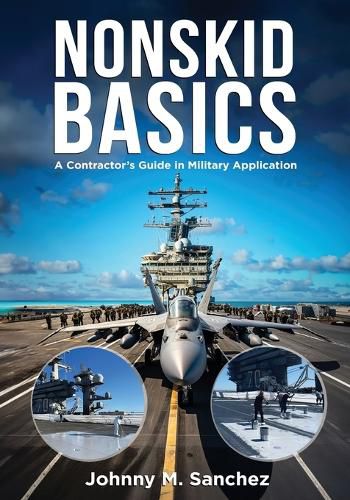Readings Newsletter
Become a Readings Member to make your shopping experience even easier.
Sign in or sign up for free!
You’re not far away from qualifying for FREE standard shipping within Australia
You’ve qualified for FREE standard shipping within Australia
The cart is loading…






This title is printed to order. This book may have been self-published. If so, we cannot guarantee the quality of the content. In the main most books will have gone through the editing process however some may not. We therefore suggest that you be aware of this before ordering this book. If in doubt check either the author or publisher’s details as we are unable to accept any returns unless they are faulty. Please contact us if you have any questions.
Nonskid coatings are a complex coating system containing aggregates, which help provide a slip--resistant deck on walk areas or vehicle traffic areas, and most importantly-on aviation decks. This nonskid coating is a major safety feature onboard U.S. Navy vessels. The most common coating removal process 25-30 years ago was through centrifugal blasting (walk-behind blasting) meeting the requirement of SSPC-SP-10(6,7), which created debris and dust contamination. Throughout the years there have been many technical advances in the removal process, which have helped both with environmental concerns and most importantly by reducing the amount of exposure to the personnel. This process is accomplished through the use of ultra-high pressure water jetting with pressures ranging from 35,000-50,000 psi,
Nonskid coatings are normally applied on decks. The equipment used are walk-behind portable centrifugal blasters. Abrasive blasting is the operation of forcibly propelling a stream of abrasive material against a surface. The objective is to make a roughened surface for the anticorrosive barrier coat (primer) to adhere to the surface being coated; a process known as "mechanical adhesion". This roughened surface can be identified as an "anchor tooth" or "profile" rendering a peak-to-valley surface.
Features covered in the book include:
The use of nonskid coatings in military application. Understanding surface prep requirements for nonskid systems. Blast media selection for non-skid systems on naval ships, comprised of different alloys. Anti corrosion epoxy primers and compounds used in nonskid systems. Nonskid system types and compositions and their use for different locations on naval vessels.
This book is comprised of 30 years of lessons learned on nonskid systems applied on naval ships and is structured to save contractors time and money. It gives the contractor or naval agencies around the world a cost-effective way to apply nonskid systems and includes different classes and sizes of naval ship decks. This will aid contractors in quoting work for the navy.
$9.00 standard shipping within Australia
FREE standard shipping within Australia for orders over $100.00
Express & International shipping calculated at checkout
This title is printed to order. This book may have been self-published. If so, we cannot guarantee the quality of the content. In the main most books will have gone through the editing process however some may not. We therefore suggest that you be aware of this before ordering this book. If in doubt check either the author or publisher’s details as we are unable to accept any returns unless they are faulty. Please contact us if you have any questions.
Nonskid coatings are a complex coating system containing aggregates, which help provide a slip--resistant deck on walk areas or vehicle traffic areas, and most importantly-on aviation decks. This nonskid coating is a major safety feature onboard U.S. Navy vessels. The most common coating removal process 25-30 years ago was through centrifugal blasting (walk-behind blasting) meeting the requirement of SSPC-SP-10(6,7), which created debris and dust contamination. Throughout the years there have been many technical advances in the removal process, which have helped both with environmental concerns and most importantly by reducing the amount of exposure to the personnel. This process is accomplished through the use of ultra-high pressure water jetting with pressures ranging from 35,000-50,000 psi,
Nonskid coatings are normally applied on decks. The equipment used are walk-behind portable centrifugal blasters. Abrasive blasting is the operation of forcibly propelling a stream of abrasive material against a surface. The objective is to make a roughened surface for the anticorrosive barrier coat (primer) to adhere to the surface being coated; a process known as "mechanical adhesion". This roughened surface can be identified as an "anchor tooth" or "profile" rendering a peak-to-valley surface.
Features covered in the book include:
The use of nonskid coatings in military application. Understanding surface prep requirements for nonskid systems. Blast media selection for non-skid systems on naval ships, comprised of different alloys. Anti corrosion epoxy primers and compounds used in nonskid systems. Nonskid system types and compositions and their use for different locations on naval vessels.
This book is comprised of 30 years of lessons learned on nonskid systems applied on naval ships and is structured to save contractors time and money. It gives the contractor or naval agencies around the world a cost-effective way to apply nonskid systems and includes different classes and sizes of naval ship decks. This will aid contractors in quoting work for the navy.